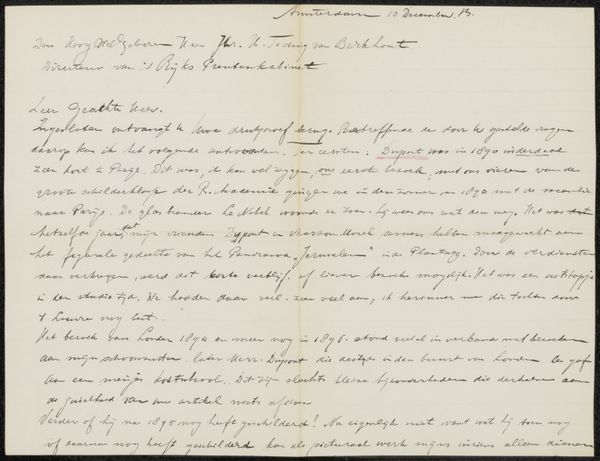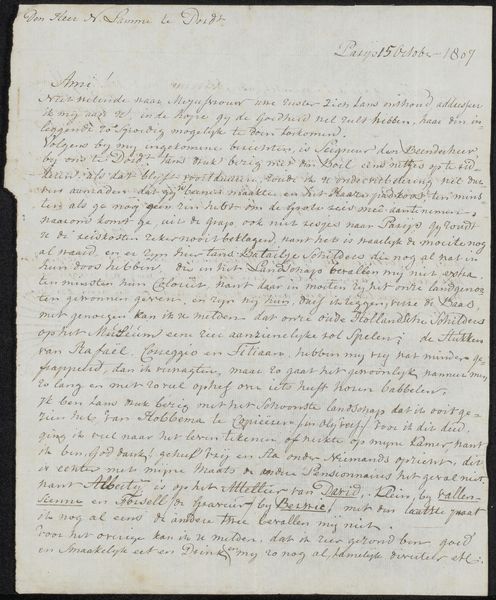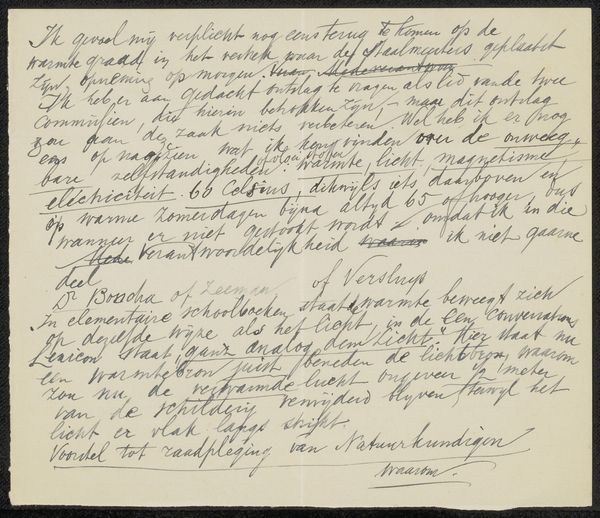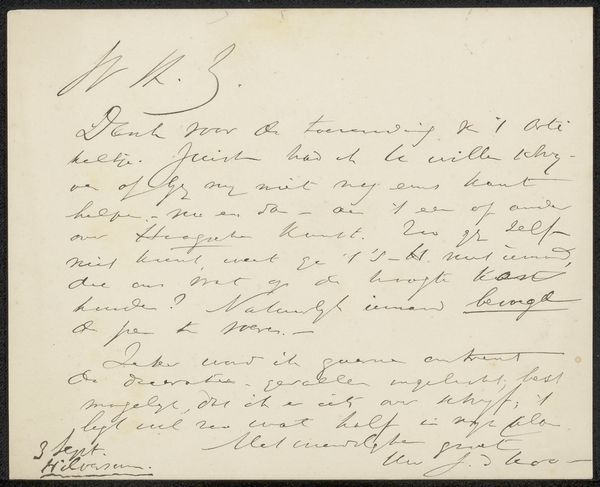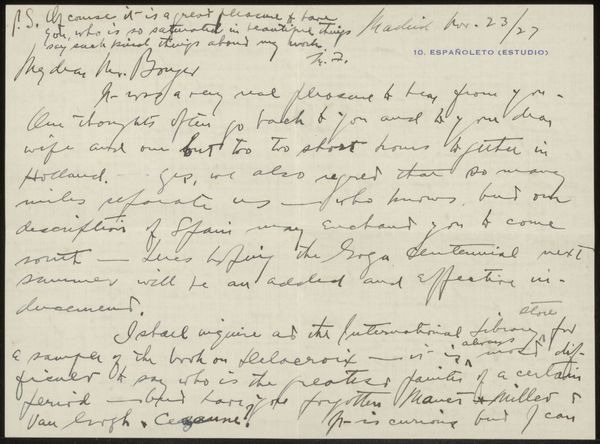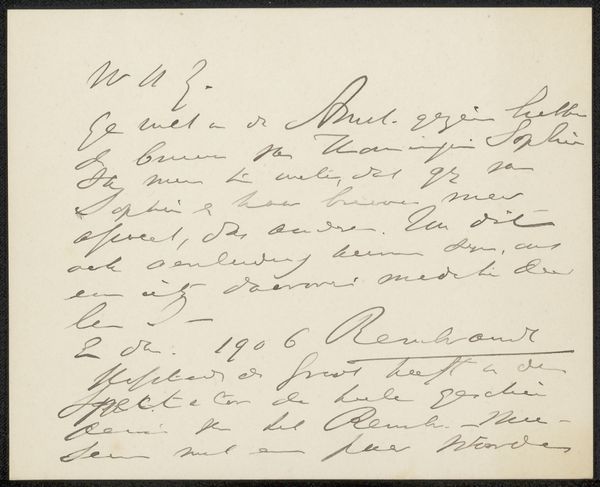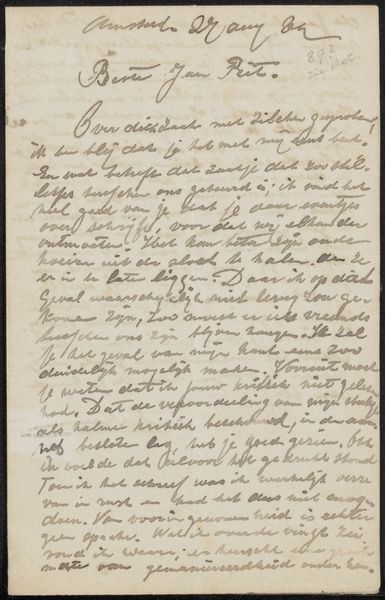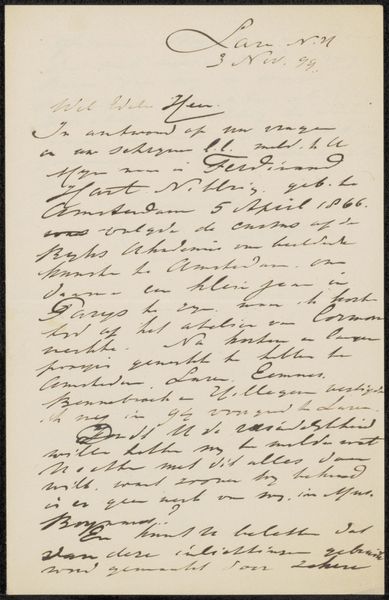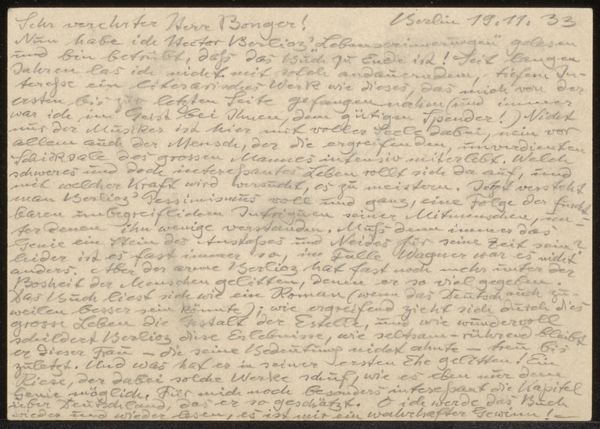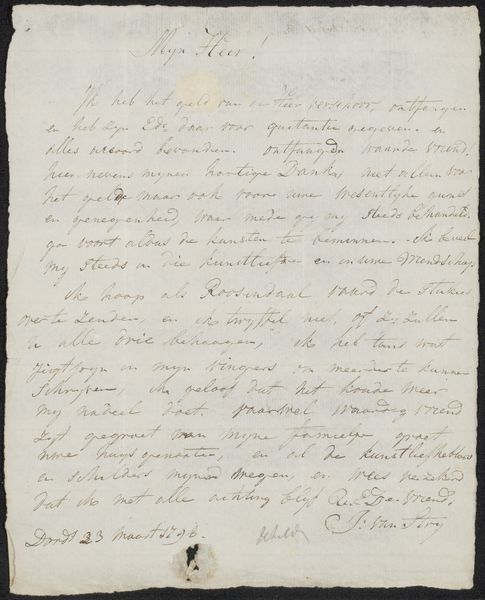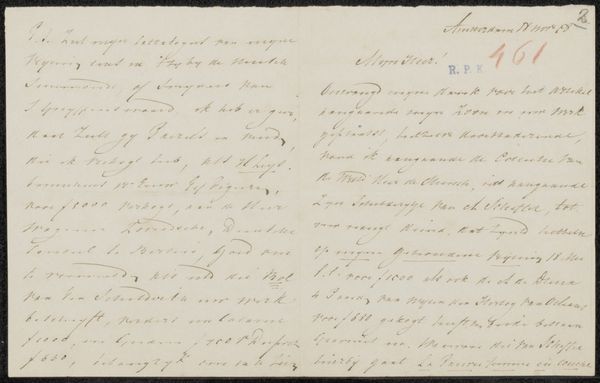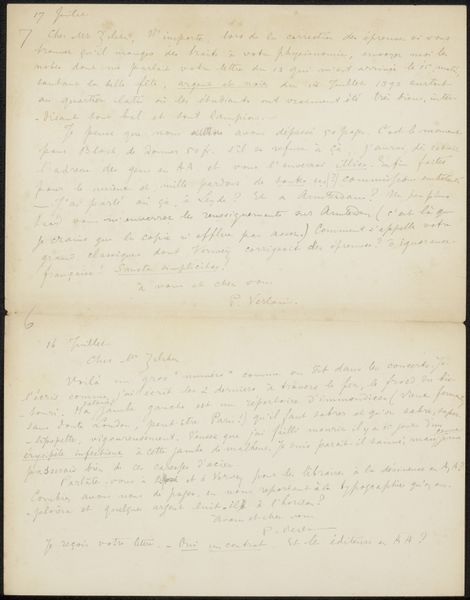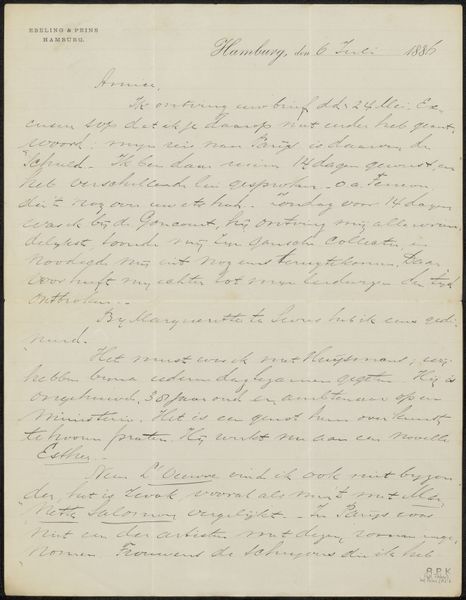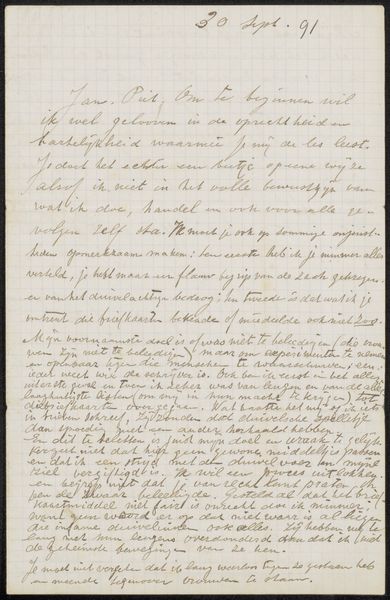
Brief aan Max Wilhelm Carl Weber en Anne Antoinette Weber-Van Bosse Possibly 1911 - 1930
0:00
0:00
drawing, ink, pen
#
drawing
#
hand-lettering
#
hand drawn type
#
hand lettering
#
personal sketchbook
#
ink
#
hand-drawn typeface
#
ink drawing experimentation
#
pen-ink sketch
#
pen work
#
sketchbook drawing
#
pen
#
sketchbook art
#
calligraphy
Copyright: Rijks Museum: Open Domain
Editor: This is “Brief aan Max Wilhelm Carl Weber en Anne Antoinette Weber-Van Bosse” – which translates to “Letter to Max Wilhelm Carl Weber and Anne Antoinette Weber-Van Bosse” - by August Allebé, likely from sometime between 1911 and 1930. It’s an ink drawing. It feels very personal, almost like a peek into a private conversation. What strikes you about this piece? Curator: What I see here is not simply a letter, but a trace of human connection, rendered visible through ink on paper. I am interested in the socio-historical context. Consider the act of letter-writing itself during that time. It wasn't just communication; it was a ritual, a deliberate act of crafting and sharing thoughts. How do the identities and roles of the sender and recipients shape the content and tone? Editor: It looks almost like a stream of consciousness. The writing is beautiful but feels very informal, as if capturing the everyday details. Curator: Exactly. This connects to broader issues of representation. Whose voices are traditionally amplified in art history? Often, it's the elite. A piece like this offers a counter-narrative. It lets us consider the lives, concerns, and intimacies of people who may have been excluded from the dominant historical record. Can we understand the letter as a form of resistance? Editor: That's a compelling point. It really shifts my perspective to think about who gets remembered and how. Curator: And it urges us to challenge conventional notions about artistic subjects. Is a letter a minor work? Or can it serve as a poignant reflection of human experience and social dynamics? How does the choice of language affect its accessibility and impact? Editor: I guess I hadn't considered the act of letter writing itself as a historical artifact that could offer some sort of social commentary, rather than just taking it at face value as a letter. Curator: Precisely. We often think about portraits and grand narratives, but sometimes the most revealing insights are found in these intimate, seemingly ordinary objects. Editor: Thanks, that's given me a lot to consider about how we value art and whose stories get told.
Comments
No comments
Be the first to comment and join the conversation on the ultimate creative platform.
